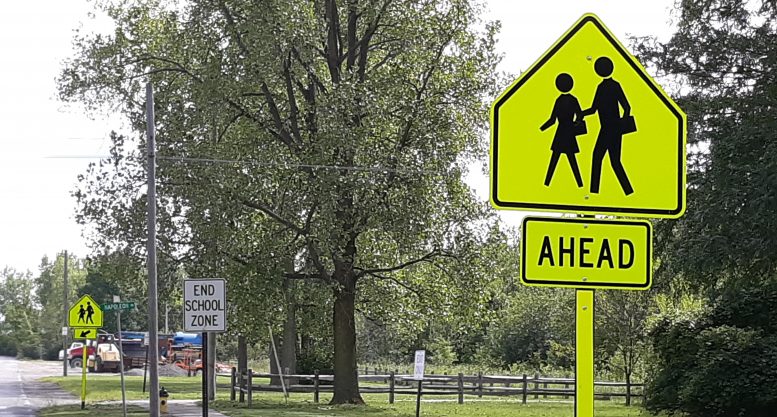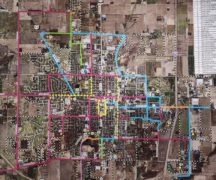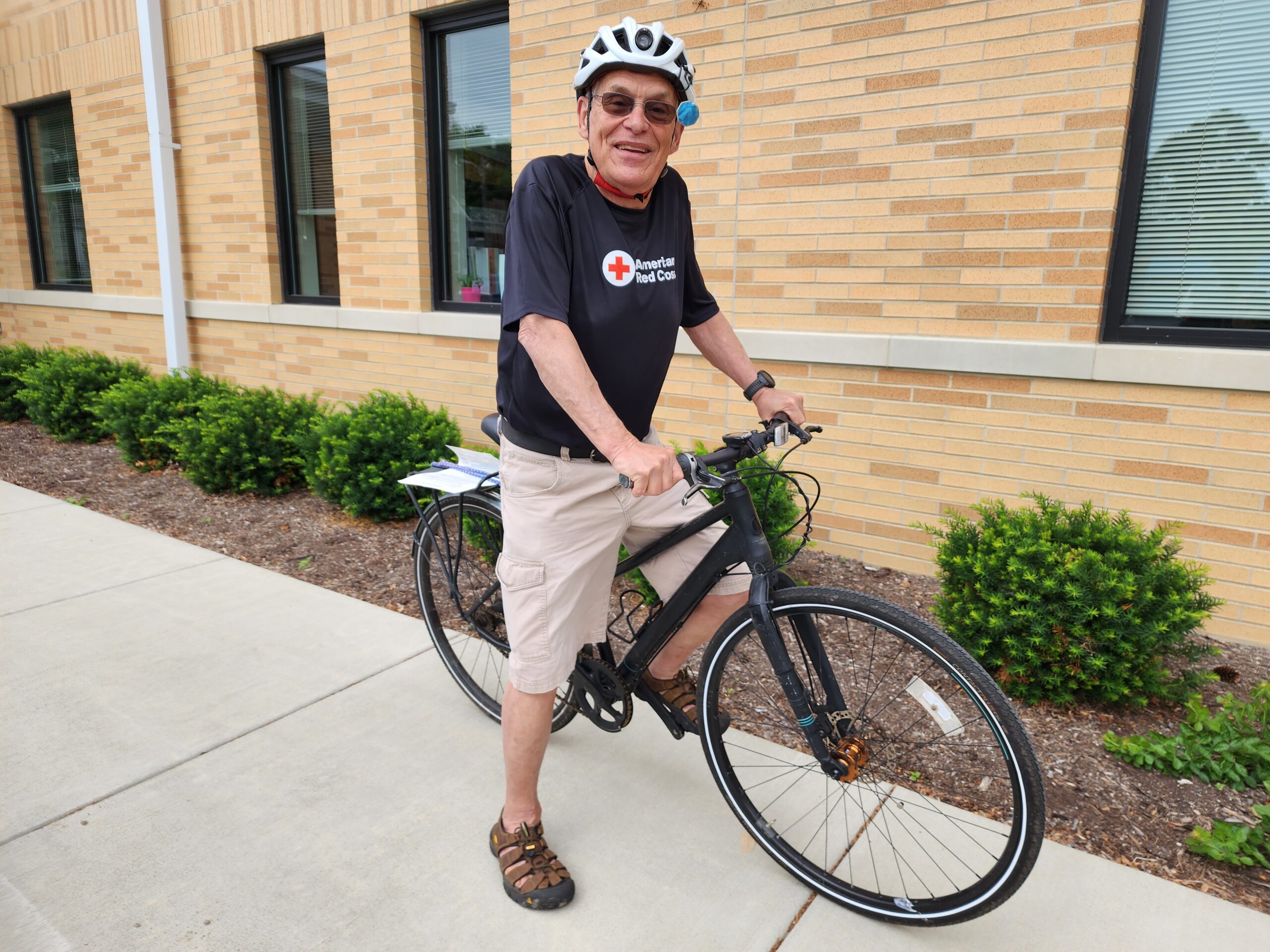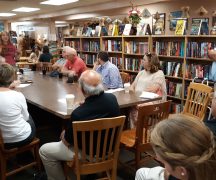By JAN LARSON McLAUGHLIN
BG Independent News
Kids who walk or bike to school are more ready to learn and less likely to be obese, according to the Toledo Safe Routes to School coordinator.
But in Bowling Green, only about 10 percent of students walk or bike to school.
So Jenny Hansen, who works with the YMCA to coordinate Toledo’s program, was asked to speak last week to members of the Save Our Schools group trying to prevent the construction of one elementary school to take the place of the three current buildings.
The Safe Routes to School program, administered under the Ohio Department of Transportation, focuses on eliminating the barriers that keep students living within one mile of school from walking of biking each day.
The two parts of the program study infrastructure and education.
The infrastructure part of the program can fund items like sidewalks, rapid flashing beacons, better signage and pedestrian islands. Those funds must be applied for by municipalities, not school districts, according to Ben Cordes and Chris Hibbett, from ODOT.
“Our infrastructure is very outdated,” designed for cars and not pedestrians and bicyclists, Hansen said.
“We let them know where the deer are crossing, we should let them know where the kids are crossing,” she said.
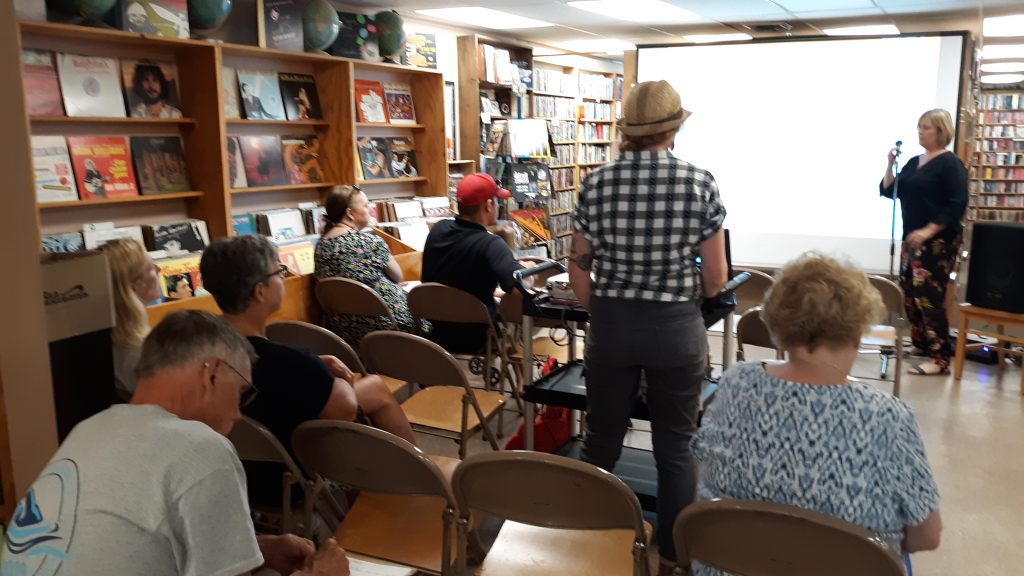
The education part of the program looks at how to help students learn to be safe walkers and bikers. That can include educating the community on pedestrian and bicycling laws. Groups such as school boards or PTO organizations can apply for funding for the education components.
Increasing the number of walking and biking students would reduce congestion and pollution at the schools each day at drop-off and pick-up times, Hansen said.
And, it will lead to kids being more healthy.
“Kids are less active,” Hansen said, noting the cuts to physical education programs and recess times. “Youth obesity is on the rise.”
Nationwide, 50 years ago nearly all kids walked or biked to school. That number nationwide is now 13 percent.
Walking or biking to school helps students be more focused and attentive in class, Hansen said. It leads to a more positive self-image, an opportunity to build relationships and an increased sense of community, she said.
“Kids love to be independent,” Hansen said, adding that children are encouraged to walk with a “buddy.”
The barriers to children walking or biking to school also include such issues as crime, bullying, stray dogs, she said.
“Parents have this perception their child is going to be abducted,” Hansen said, adding that those fears are not realistic.
Other barriers may be traffic dangers such as the speed and number of vehicles, the lack of sidewalks and safe crossings, and the lack of safe practices.
As a first step, a Safe Routes to School Team can be created, including officials from the school district, city, county health department, ODOT, law enforcement, and bicycle and pedestrian advocates.
Surveys are then conducted by talking with parents, school principals, crossing guards and community members. Teachers will be asked to take “classroom tallies” of how many students are walking and biking to school.
ODOT can be asked to submit “crash maps” for the one-mile radius around the schools, and existing bike and pedestrian safety programs can be identified.
Walk audits should be conducted, Hansen said, which involve observing the arrival and dismissal times at school. That audit can identify items impacting safe travel and specify priority corridors that children should be using to and from school.
“Kids will take the shortest route, but that’s not always the safest route,” Hansen said.
The program can take steps to make it safer for kids to bike to school – such as set up a bike fix-it program, offer a bike lock loan program and hand out free bike helmets.
“Whatever the barrier is, there’s always a solution,” Hansen said.
The grant applications are easy to complete and cost nothing but time, she said.
In Wood County, school districts in Northwood, Rossford, Perrysburg and North Baltimore have participated in the program.
“It has all these great positive effects in the community,” Hansen said. “It gets them all working together for the kids.”
After the meeting, Steve Langendorfer, who heads the Bowling Green Bicycle Safety Commission and who attended the meeting, said the application to the Safe Routes to School has been discussed.
“We’ve heard from the school district that they are open to it,” Langendorfer said.
The district could benefit from the program, regardless of whether it retains its three elementaries or votes to build one new elementary, he said.
Bowling Green already does a lot of the bicycle programming that was discussed at last week’s meeting, Langendorfer said. There is a bicycle education program for all third graders, plus a Safety Town program covering pedestrian and biking for younger children.
The city also has a Bicycle Safety Commission that includes representation from the schools. That group has created bike maps for the community, and promotes the placement of bike sharrows.

